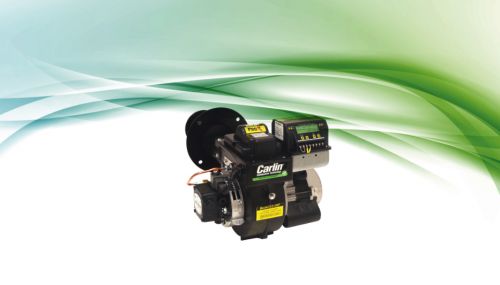All
What’s In Your Toolbox?
by Shawna Henderson, Blue House Energy

Offer clients more ideas, more options, and you’ll earn more
By Shawna Henderson, Blue House Energy
Let’s just say it: No one ever complained about being too comfortable in their house. And looking around out there, it is easy to see that “rule-of-thumb” sizing for heating systems is rampant, and oversized equipment is everywhere.
Current clients of mine are looking to do some significant air sealing and insulation work. They have an amply oversized oil-fired forced air furnace now, and the top-floor bedroom furthest away from the unit is always cold. And the room always has condensation on the windows. Even oversized, the furnace can’t push enough heat out.
So my clients, who themselves are accomplished researchers in different fields, applied their research skills to upgrading the HVAC system. And they have determined that a heat pump is what will best serve their needs. They hired me to listen to them and make recommendations based on their understanding of what they had researched, and to take a look at the quotes when they came in.
Air sealing? Check.
Insulation upgrades? Check.
Heat pump? Check.
So the quotes started coming in, and while the HVAC contractors are all quoting on Energy Star single-compressor units, they are recommending different sizes: two tons, two-and-a-half tons, three tons.
Out of four contractors, only one took measurements. Out of the four contractors, only one made comments about the questionable octo-ducting in the basement. While I’d like to announce that these were one and the same firm, doing a bang-up job of making my clients feel confident about whom they would be choosing to do the retrofit, I can’t. The measurer was a salesperson for a large firm. For the other three, the person who came to the house was the person who would be installing the system.
How to Choose?
The good news from my perspective was that the firm that included duct testing and modifications in their quote was the one that had been in business the longest, had a track record for decades working with oil-heating systems, and had now branched out into heat pumps. But still, they did no heat loss calculation.
I have to point out that the homeowners were planning significant changes to the house envelope and a future addition—changes that would alter the heating load by a significant amount. But how much? And where was the benchmark to start from? The oversized furnace? Not much help. Bottom line is: We don’t know.
As the quotes arrived, I noted that not a one of the contractors had pointed out that they could offer a much better-performing unit for a premium that would be paid back quickly by the increased performance level. Even though two of them are regional reps for dual-compressor or variable speed ‘cold climate’ units, they quoted only single-compressor units.
There are missed opportunities for the HVAC contractors all over the place in this scenario. These folks are just coming in and doing the job they are asked to do. Only the contractor who recommended testing and redesigning some of the ductwork differentiated himself from the pack. My clients are much more interested in hearing what he has to say that will make their lives more comfortable than they are in pursuing the lower prices they got from the other three.
Differentiate for Better Margins
As a contractor, how do you differentiate? You add to your skill set (or your technicians’ skill sets, or add a partner business’ skill set) and you share knowledge with your client. You give them something better to think about. You level up. And in the process, you can increase your margins.
There will be some clients who get lost at the higher price tag, yes. But anyone can come in and price up a box and slap it in and walk away. And if you want to be in that arena, it’s always going to be a tough sell, and margins will be as thin as you can make them. Differentiating yourself can improve margins, if only because you have happier customers and fewer callbacks. Likely, your margins will also improve because you’re offering more service.
I look at it this way: The world of renovations is a high anxiety place for homeowners. The more anxiety you can take off their plates, the better. You need to be able to clearly define your offering and how it is better than your competition, Bubba and the Box Swappers (shout out to Mike Stout for the next industry standard blues band name).
I would have been impressed if any of the contractors had said, “I’m going to give you a quote that looks after that rats nest of ducting and gives you a much higher-performance unit that will cost you a little more now, but will save you another X percent a year, every year for the next 20, and we’re going to size it based on a recognized standard for calculating these things.” There would have been no question as to who would win the contract! And all the better if that contractor had added, “And by the way, we (or the insulating firm we work with) can do your air-sealing/insulation work, too…and we’ll do a blower door test before and after to make sure you get the best job possible…”
Settling on the Right Size
In this case, the homeowners brought me back to do a heat loss calculation so they could get revised quotes from the four contractors. I got paid to do that, by the way… because I offered it as a way out of their dilemma. I solved a problem for them: How could they decide which of the HVAC companies had given them the best deal if they couldn’t determine which was the right-sized unit?
I also pointed out variable speed and/or two-compressor units that each of the contractors could get their hands on from their existing suppliers. It’s up to the homeowners to make the call on which type of unit they will go for, but now they are comparing apples to apples, and will definitely be able to sort through the revised quotes with more confidence.
There are clients who just want the box swapped, and that’s fine. But then there are clients who want the best solution. As a consultant who doesn’t do installations, I want to rely on a solid roster of good technicians who always bring their best game to the client, and who can see the problems with equipment and systems that I’m not qualified to diagnose. To do that well, they also need to understand that controlling air leakage and reducing energy use are key to improving home performance, and I want them to work with me to find the best solution.
In the end, it’s all about the box of tools you bring with you to the client meeting, and the toolkit you use when building your quote as well as the tools you use for the install. Your technicians are a marketing person’s ideal strategy come to life. They are in the home with the client, and the client is relying on them for qualified advice. The technician can see what’s needed, what the client doesn’t know they need, and they can bridge the gap, do a quick measure-up for a heat loss calculation and recommend a line of action that focuses on the best solution for that client.
Bringing your team up to speed with home performance will help you leap ahead of the competition into a full-service firm that is second to none.
Related Posts
 Carlin Begins Production on UL Listed B100 Burners
Carlin Begins Production on UL Listed B100 Burners
Posted on December 7, 2023
 NORA Looks at Indoor Air Quality
NORA Looks at Indoor Air Quality
Posted on December 7, 2023
 Why Market Renewable Propane for Your Business?
Why Market Renewable Propane for Your Business?
Posted on October 6, 2023
 Are Carbon Handprints a Better Metric?
Are Carbon Handprints a Better Metric?
Posted on October 6, 2023
Enter your email to receive important news and article updates.
